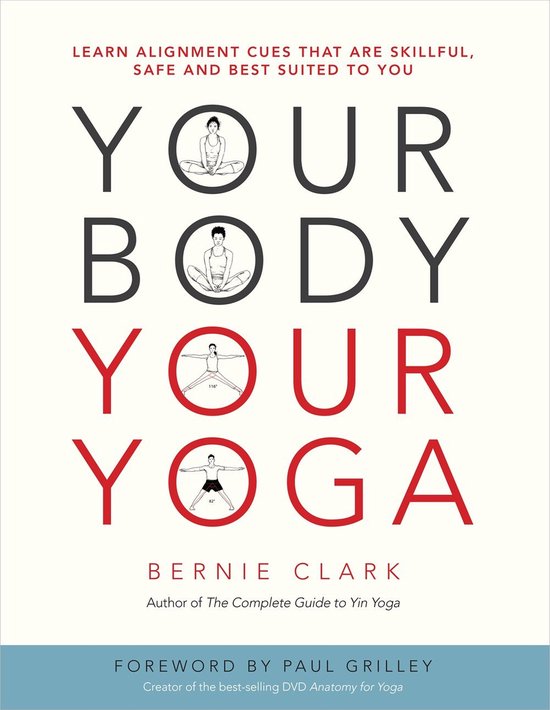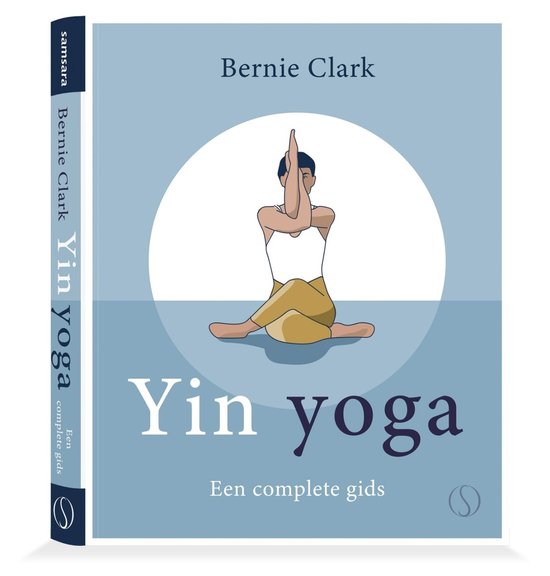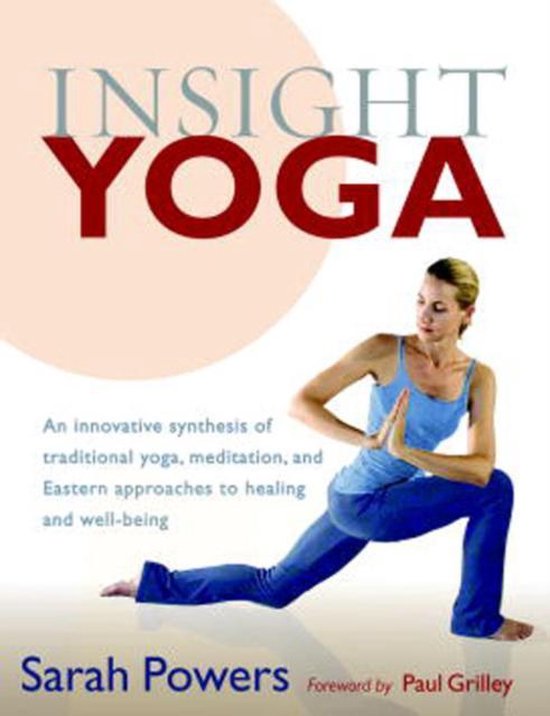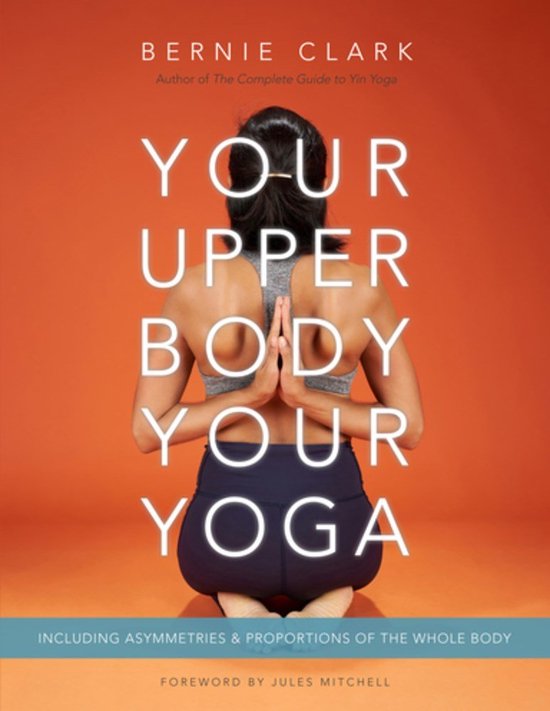
Your Body Your Yoga
Your Body, Your Yoga goes beyond any prior yoga anatomy book available. It looks not only at the body's unique anatomical structures and what this means to everyone's individual range of motion, but also examines the physiological sources of restrictions to movement.
"More important than knowing what kind of pose the student is doing is knowing what kind of student is doing the pose."
There is a revolution occurring in yoga today around the alignment paradigm. The concept of one and only one ideal alignment for each yoga posture, taught through an aesthetic focus on how the student looks in the pose, is being replaced by a functional approach that acknowledges not only the intention of the posture but each student’s unique biology and biography. In parallel, the paradigm of focusing on the muscles as the limiters and causal agents of movement is being replaced by a broader understanding. The role of fascia is being recognized and incorporated into yoga classes and trainings. Beyond muscles and fascia, there is a wide spectrum of causes for and resistance to motion, ranging from various sources of tension to the qualities of compression.
Your Body, Your Yoga is the first book in a series describing the many contributors to limitations in our yoga practice. This book looks at the lower body, and the variety of shapes, movements and potential restrictions to movement in the hips, knees, ankles and feet. Introduced are the causes of resistance to movement, the frequency, extent and consequences of human variation, and their implications for our yoga practice. While short, tight muscles can restrict movement, there are many reasons for a lack of mobility. The causes can be cast into a gradient, called the What Stops Me? Spectrum”: fascia, ligaments and joint capsules can be tight and tense, while compression arising from the body contacting other parts of the body will also impede movement. How these tissues develop their tension may be due to actions of our nervous or immune systems, or it may be due to our inherently unique body structure. Compression is the ultimate limiter of movement and is variable, depending upon a student’s individual skeletal structure. All students are unique to varying degrees, and this individuality determines their ability and progress in their yoga practice and its benefit for them.
Your Body, Your Yoga goes beyond any prior yoga anatomy book available. It looks not only at the body's unique anatomical structures and what this means to everyone's individual range of motion, but also examines the physiological sources of restrictions to movement. Two volumes are provided in this book: Volume 1 raises a new mantra to be used in every yoga posture: What Stops Me? The answers presented run through a spectrum, beginning with a variety of tensile resistance to three kinds of compressive resistance. Examined is the nature of muscles, fascia, tendons, ligaments, joint capsules, bones and our extracellular matrix and their contribution to mobility. The shape of these structures also defines our individual, ultimate range of movement, which means that not every body can do every yoga posture. The reader will discover where his or her limits lie, which dictates which alignment cues will work best, and which ones should be abandoned. Volume 2 will take these principles and apply them to the lower body, examining the hip joint, the knee, ankle and foot, and will present how your unique variations in these joints will show up in your yoga practice.
"More important than knowing what kind of pose the student is doing is knowing what kind of student is doing the pose."
There is a revolution occurring in yoga today around the alignment paradigm. The concept of one and only one ideal alignment for each yoga posture, taught through an aesthetic focus on how the student looks in the pose, is being replaced by a functional approach that acknowledges not only the intention of the posture but each student’s unique biology and biography. In parallel, the paradigm of focusing on the muscles as the limiters and causal agents of movement is being replaced by a broader understanding. The role of fascia is being recognized and incorporated into yoga classes and trainings. Beyond muscles and fascia, there is a wide spectrum of causes for and resistance to motion, ranging from various sources of tension to the qualities of compression.
Your Body, Your Yoga is the first book in a series describing the many contributors to limitations in our yoga practice. This book looks at the lower body, and the variety of shapes, movements and potential restrictions to movement in the hips, knees, ankles and feet. Introduced are the causes of resistance to movement, the frequency, extent and consequences of human variation, and their implications for our yoga practice. While short, tight muscles can restrict movement, there are many reasons for a lack of mobility. The causes can be cast into a gradient, called the What Stops Me? Spectrum”: fascia, ligaments and joint capsules can be tight and tense, while compression arising from the body contacting other parts of the body will also impede movement. How these tissues develop their tension may be due to actions of our nervous or immune systems, or it may be due to our inherently unique body structure. Compression is the ultimate limiter of movement and is variable, depending upon a student’s individual skeletal structure. All students are unique to varying degrees, and this individuality determines their ability and progress in their yoga practice and its benefit for them.
Your Body, Your Yoga goes beyond any prior yoga anatomy book available. It looks not only at the body's unique anatomical structures and what this means to everyone's individual range of motion, but also examines the physiological sources of restrictions to movement. Two volumes are provided in this book: Volume 1 raises a new mantra to be used in every yoga posture: What Stops Me? The answers presented run through a spectrum, beginning with a variety of tensile resistance to three kinds of compressive resistance. Examined is the nature of muscles, fascia, tendons, ligaments, joint capsules, bones and our extracellular matrix and their contribution to mobility. The shape of these structures also defines our individual, ultimate range of movement, which means that not every body can do every yoga posture. The reader will discover where his or her limits lie, which dictates which alignment cues will work best, and which ones should be abandoned. Volume 2 will take these principles and apply them to the lower body, examining the hip joint, the knee, ankle and foot, and will present how your unique variations in these joints will show up in your yoga practice.
| Auteur | | Bernie Clark |
| Taal | | Engels |
| Type | | Paperback |
| Categorie | | Sport & Outdoor |





